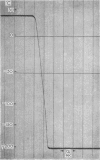Abstract
The survival rates of the cortical parenchymal cells of mulberry tree were determined as a function of cooling and rewarming rates. When cooling was carried out slowly at 1° to 15° per minute, all of the cells still remained viable even when rewarmed either rapidly or slowly. Survival rates gradually decreased to zero as the cooling rate increased from about 15° to 2000° per minute. In the intermediate cooling rates, when the cells were cooled at the rates lower than 14° per minute, from −2.2° to about −10°, these cells could survive subsequent rapid cooling and rewarming.
However, at cooling rates above 1000° per minute and with rapid rewarming, the effect of cooling rate reversed and survival increased, reaching a maximum at about 200,000° per minute. As the cooling rate increased above 15° per minute, survival rates became increasingly dependent on the rewarming rate, with rapid rewarming becoming less deleterious than slow rewarming.
The temperature range at which damage occurred during rewarming following removal from liquid nitrogen and in which growth rate of ice crystallization was greatest, was −30° to −40°. The survival rates even in the prefrozen cells at −30° decreased considerably by keeping them at −30° for 10 minutes after removal from liquid nitrogen. This fact indicates that intracellular freezable water remains to some degree even in the prefrozen cells at −30°. After removal from liquid nitrogen, all cells retained their viability, when they were passed rapidly through a temperature range between −50° and −2.5° within about 2 seconds, namely at the rates greater than 1000° per minute.
These observations are explained in terms of the size of the crystals formed within the cortical cells.
Full text
PDF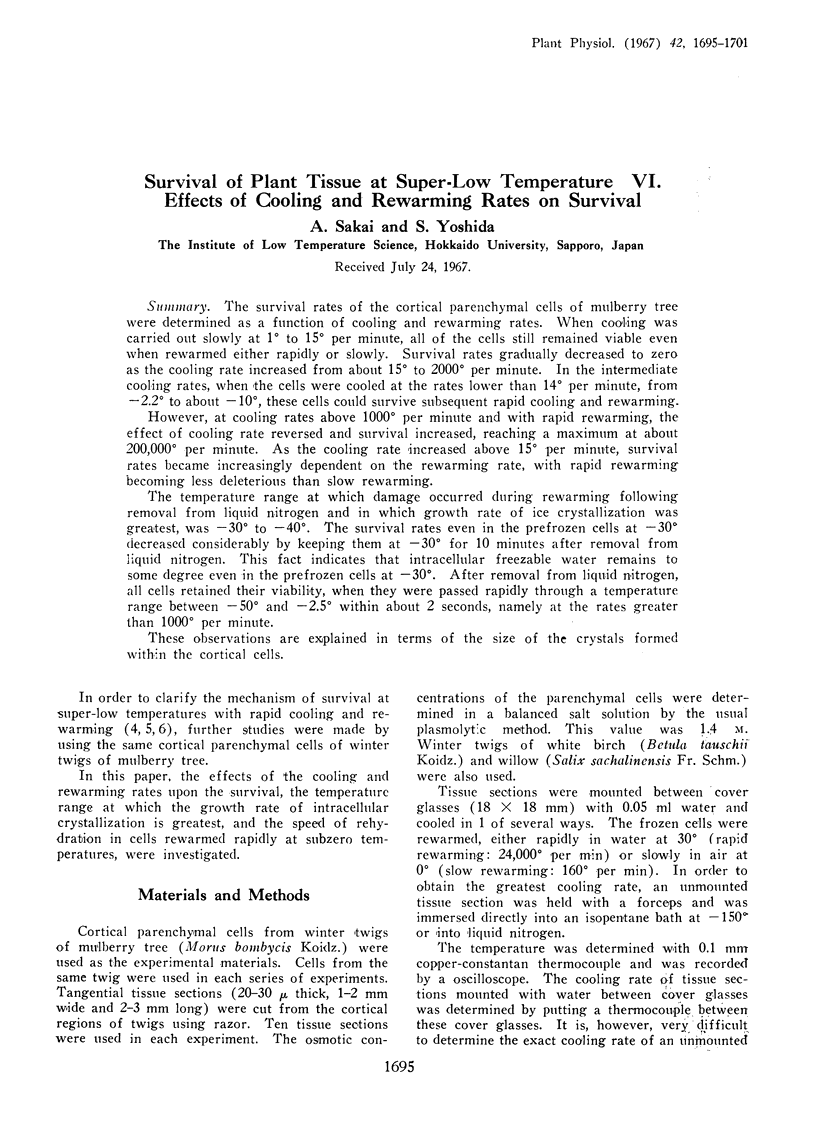
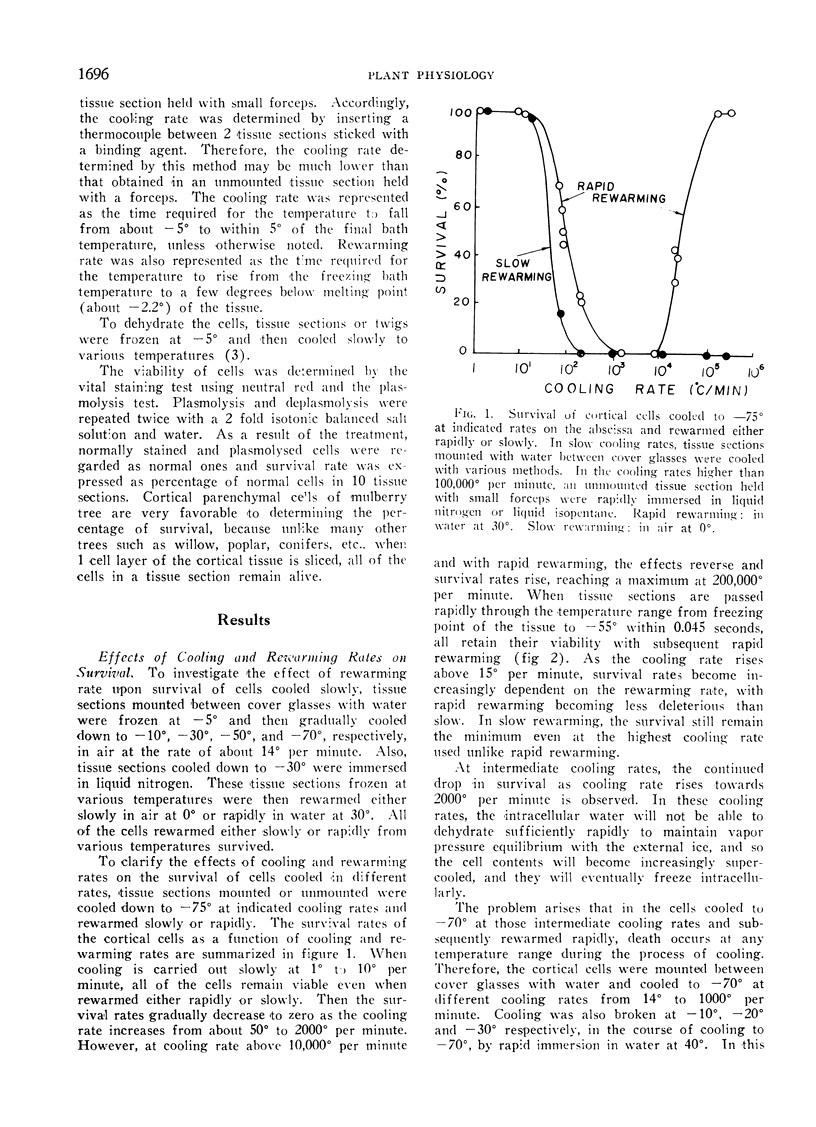
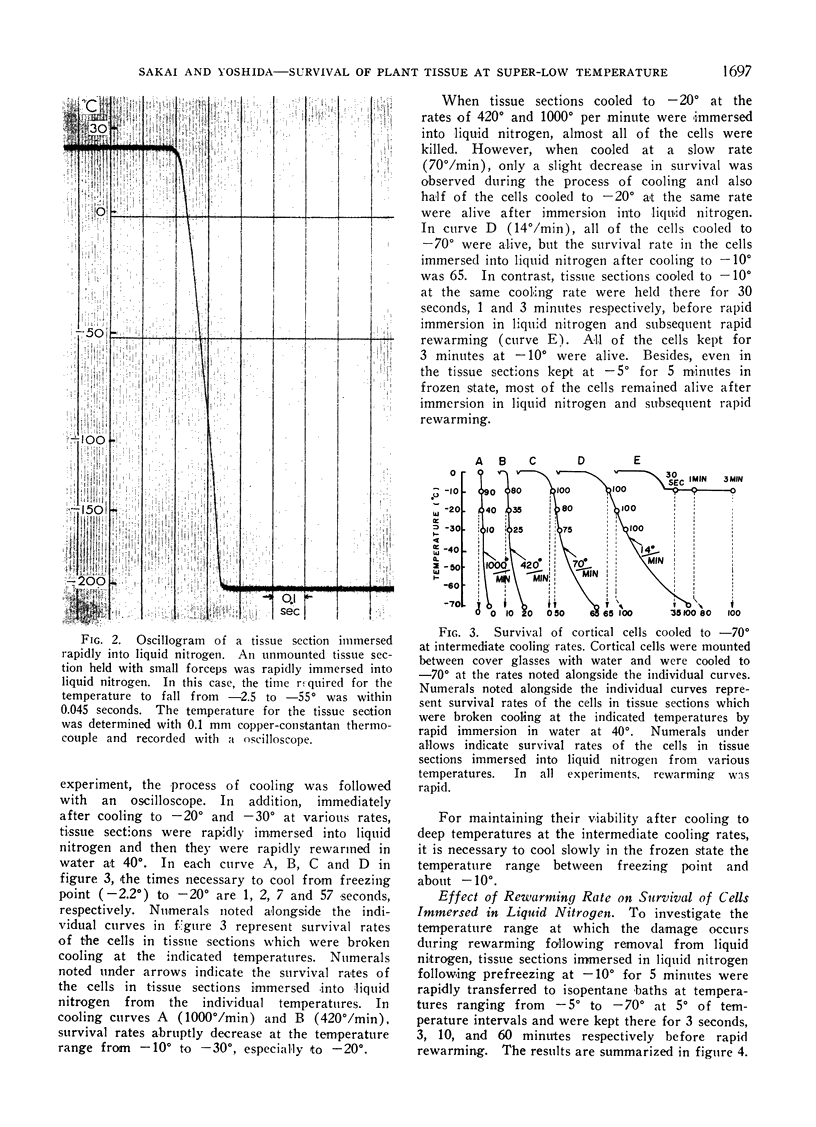

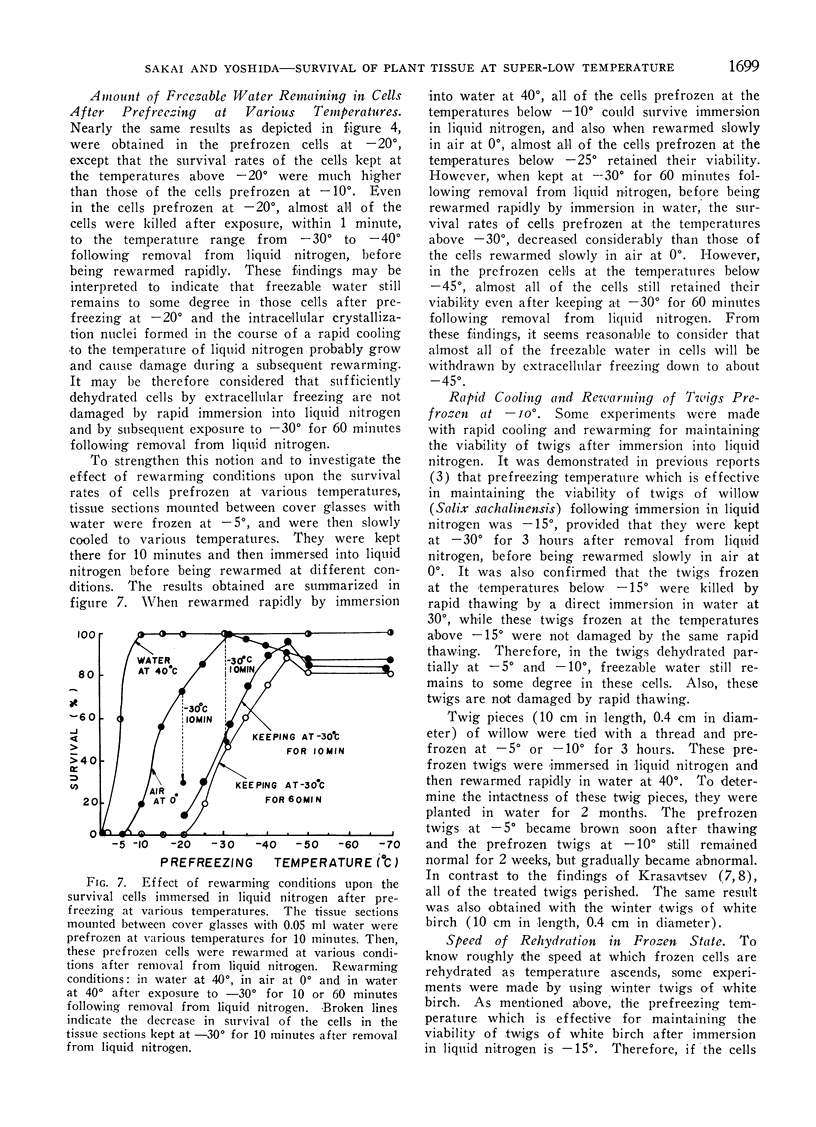
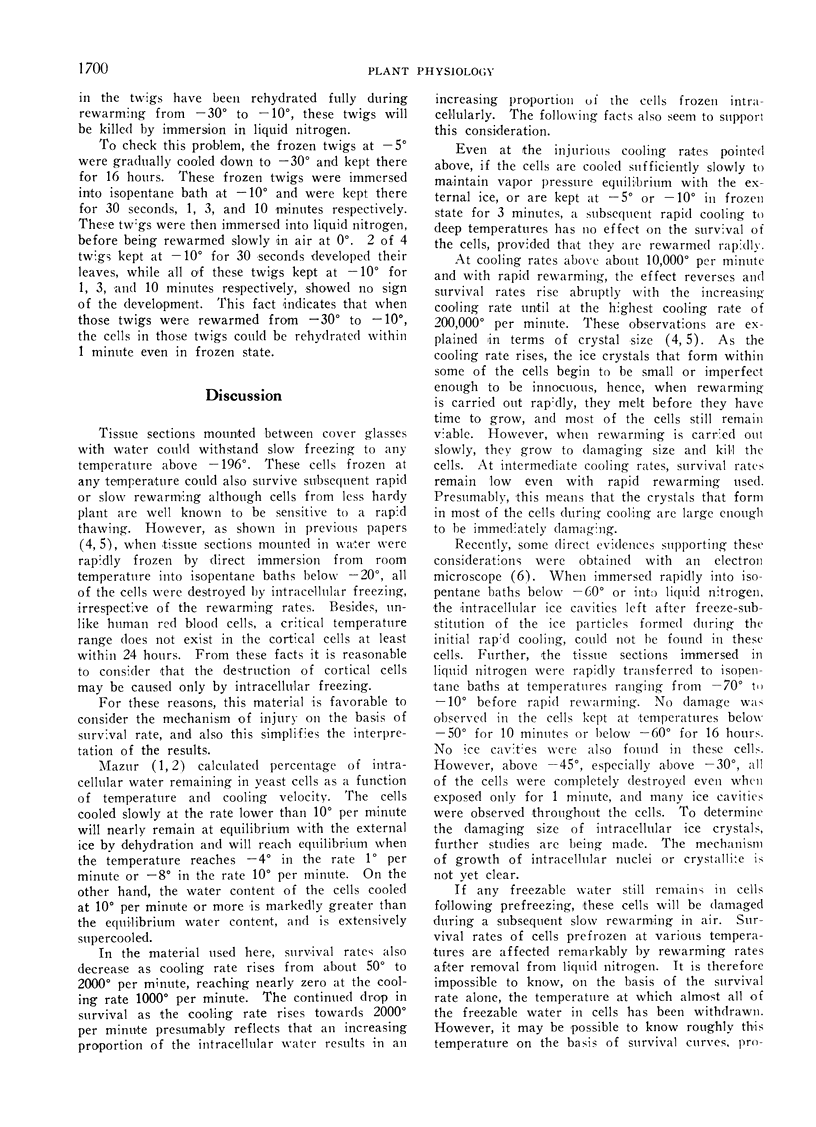
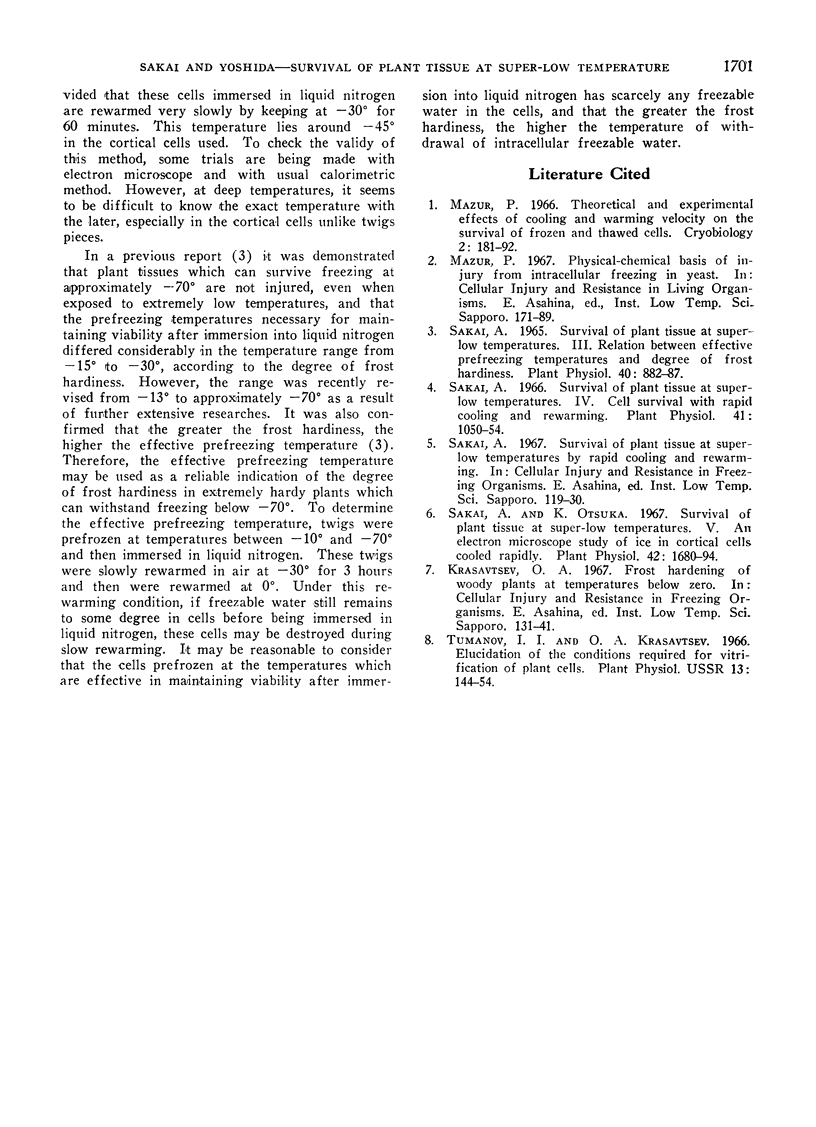
Images in this article
Selected References
These references are in PubMed. This may not be the complete list of references from this article.
- Mazur P. Theoretical and experimental effects of cooling and warming velocity on the survival of frozen and thawed cells. Cryobiology. 1966 Jan-Feb;2(4):181–192. doi: 10.1016/s0011-2240(66)80165-7. [DOI] [PubMed] [Google Scholar]
- Sakai A., Otsuka K. Survival of plant tissue at super-low temperatures v. An electron microscope study of ice in cortical cells cooled rapidly. Plant Physiol. 1967 Dec;42(12):1680–1694. doi: 10.1104/pp.42.12.1680. [DOI] [PMC free article] [PubMed] [Google Scholar]
- Sakai A. Survival of Plant Tissue at Super-Low Temperature III. Relation between Effective Prefreezing Temperatures and the Degree of Front Hardiness. Plant Physiol. 1965 Sep;40(5):882–887. doi: 10.1104/pp.40.5.882. [DOI] [PMC free article] [PubMed] [Google Scholar]
- Sakai A. Survival of Plant Tissue at Super-Low Temperatures. IV. Cell Survival with Rapid Cooling and Rewarming. Plant Physiol. 1966 Jun;41(6):1050–1054. doi: 10.1104/pp.41.6.1050. [DOI] [PMC free article] [PubMed] [Google Scholar]



